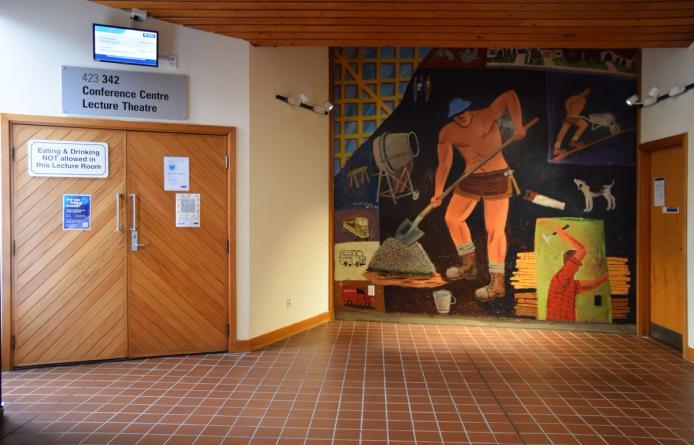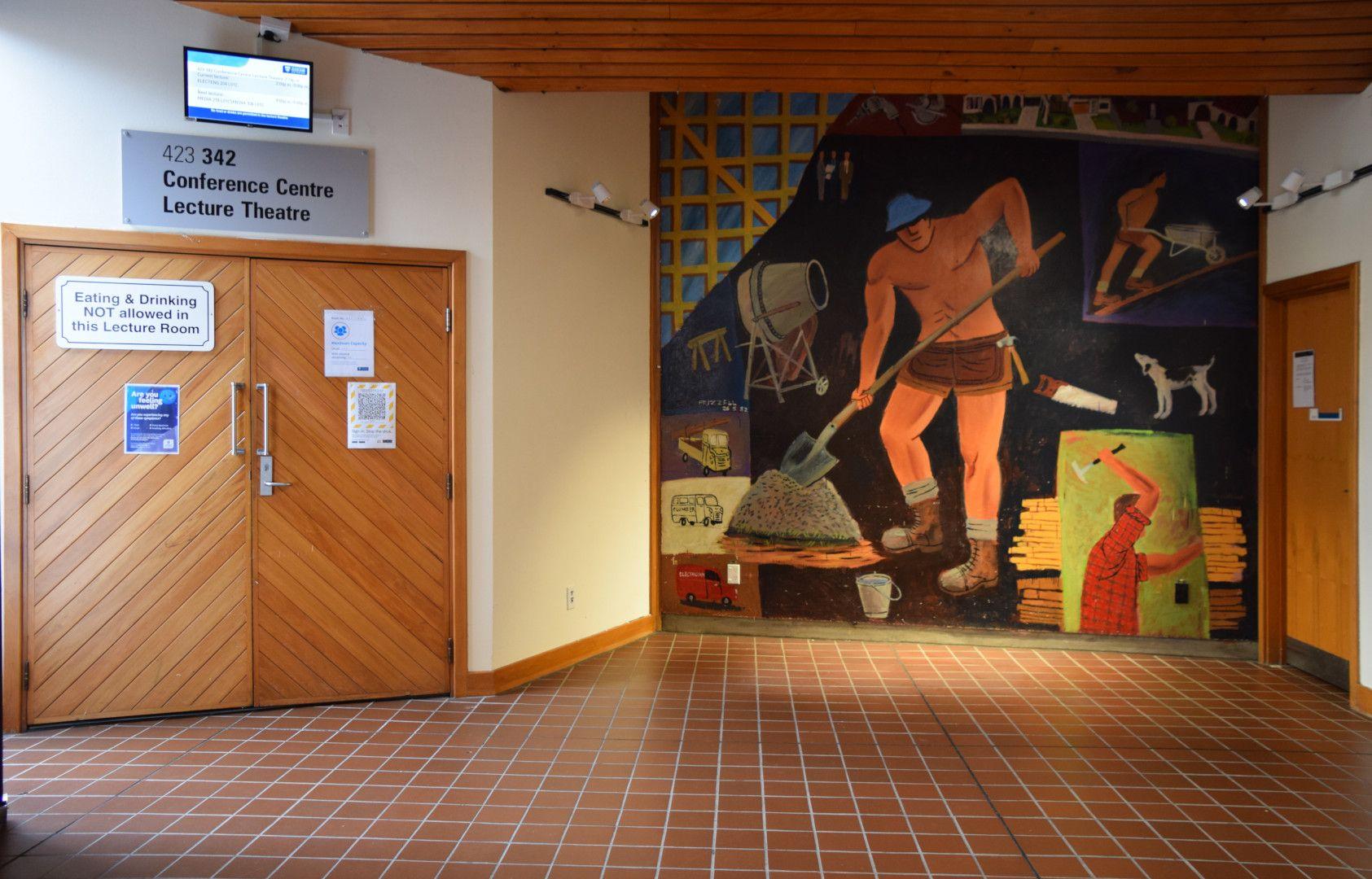Workers on Construction Site
Dick Frizzell
Type
- Mural
Medium
- Enamel paint
- Ruffit Board
Dimensions
- H3040 x W3400mm

Dick Frizzell, ‘Workers of Construction Site’ (1982), University of Auckland, City Campus, Tāmaki Makaurau Auckland
Images: Bronwyn Holloway-Smith, Public Art Heritage Aotearoa New Zealand, 2021

- DETAILS
- MAP
Description
"Developing the new Conference Centre for the University in 1982, architects Kingston Reynolds Thom and Allardice worked with architectural drawing lecturer Pat Hanly to brighten the place up.Developing the new Conference Centre for the University in 1982, architects Kingston Reynolds Thom and Allardice worked with architectural drawing lecturer Pat Hanly to brighten the place up...
... Dick Frizzell had been on the staff at Elam as a part-timer since 1980, and was entranced with post-abstraction in the United States... Frizzell had fled advertising for the higher realms of cultural production in the 1970s; his painting reaching its apotheosis with the 'Dancing Chicken' of 1980. Heading straight for the New York art world for confirmation of his direction, Frizzell collared American artists for advice, and was crestfallen to be returned to sender. Neil Jenney directed him to examine his own backyard and “represent”, assuring him that success would follow: “So that is what I did - one item at a time, iconicised in the middle of a generous colour field. It was the worst-selling show I have ever had.”
In 'Workers on a Construction Site', the central figure is clad in his carpenter’s apron and steel cap boots, wearing only a terry toweling hat as protection against the searing sun of an Auckland summer. A dinky hammer on his belt, he shovels gravel into the cement mixer, a bucket of water nearby. Nothing is to scale: his massive legs and muscly chest and arms dwarf a nearby handsaw and sawhorse. Just as his form as a worker is exaggerated, his tools are shrunk, abbreviated to become toy-like signs of the hand-built nature of the job ahead. Celebrating the worker as hero, Frizzell also reveals his ironic affection for the particularities of the fast-growing kiwi suburb of the seventies. Fashionable Spanish-style haciendas parade along the top of the painting, with concrete driveways leading to the road. Frizzell contrives to peel the image back at the corner, pretending to show the four-by-two framing of the wall itself. His aim is to reveal the artifice of painting itself, which is no longer striving to be naturalistic, or a window onto the world, but instead foregrounds the conventions of art making itself with disjunctions of scale and placement, and a flattening of form and colour."
~ quoted from University of Auckland Art Collection listing (no author provided).
See also:
- Seven Artists Contribute to the Auckland School of Architecture (Art New Zealand, Issue 25 Spring 1982)
